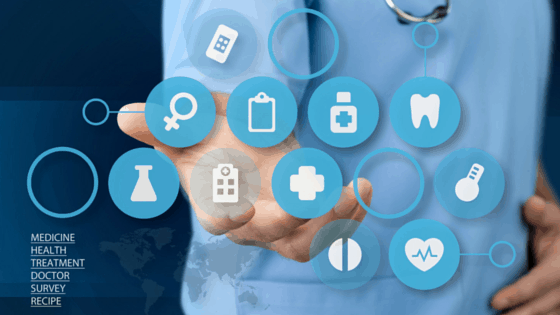
by Thomas Lethenborg | Oct 25, 2016 | Blog
The World Innovation Summit for Health (WISH) released a Report on Mental Health and Well-being for children titled “Healthy Young Minds. Transforming the mental health of children.” The information included on this blog post is taken from the report.
The report revealed that half of all mental health problems emerge before individuals reach 18 years old. However, even in developed countries, only 25% receive any specialised treatment. Mental health problems place massive costs on society, since the total cost of mental illness is 3.5 of GDP in Europe. Besides causing direct health care costs, mental illness in youths also causes educational failure, adolescent crime, teenage pregnancy.
Early intervention is fundamental. Parents, doctors and teachers need to become more open and informed, since mental illness is a common part of life. Schools need to prioritise children’s well-being and “life skills” should be added to the teaching curricula alongside mathematics and literature.
It is estimated that 31% of the world’s population is aged under 18, and 10% of them (which is equivalent to 220 million children) suffer from mental illness as it is illustrated in Figure 1.
The costs of mental illness in children are quite considerable. Children with conduct disorder are four times more likely to commit a crime, take drugs, become teenage parents, depend on welfare, and attempt suicide, as it is illustrated in Table 1.

The costs of mental illness in children are quite considerable. Children with conduct disorder are four times more likely to commit a crime, take drugs, become teenage parents, depend on welfare, and attempt suicide, as it is illustrated in Table 1.

The report estimated that in the UK alone, these children may cost in criminal justice, an amount equal to three years’ average wages.
These figures are severe enough by themselves. However, on top of that, at least 50% of the children who experience mental illness during their early years, will suffer from mental illness as an adult. [7] Their lives are more likely to be impoverished and unhappy, and they are much more likely to commit suicide.
The report mentions that these statistics shouldn’t be so high. Nowadays, there are multiple and effective treatments available for children suffering from mental illness. Besides, there is also an enormous opportunity in schools and communities to make significant changes that can reduce the likelihood of the problem in the first place.
Additionally, technology, and mobile health solutions are a huge advantage! Smartphone applications can contribute to monitor and train youths about mental health.
The WISH report encourages local communities and countries to focus on 10 Action Plans to improve the mental health of children around the world.
- Community action: Every local community should implement a child well-being strategy. This plan should include an assessment of the needs of children and families; and the role of healthcare organisations, schools, and non-government organisations.
- Parity of esteem: Mental health care for children and their parents should be widely available.
- Universality: Health professionals should be trained to identify mental health problems in children, perinatal depression in mothers, and they should also be trained to treat these issues.
- Professionals: Countries should train more professionals in evidence-based treatments, especially psychological therapy.
- Well-being in Schools: The well-being of students should be the priority of every school, including the implementation of a Well-being Code of Conduct to which all teachers, parents, and students must adhere to.
- Measurement: Schools should evaluate all student’s well-being on a continuous basis.
- Add life-skills to the teaching curriculum: Schools should use evidence-based methods to provide explicit instruction in life throughout school life, especially in the early years.
- Teacher Training: All teachers should be trained to notice and promote well-being and mental health.
- Use of smartphone technology: Implement a smartphone-based program to promote mental health and well-being of the children.
- The Sustainable development goals: The sustainable development goals should include physical and mental health.
The Monsenso mHealth solution can help facilitate the achievement six of the ten points included in the WISH Action Plan.
- Use of smartphone technology and well-being at schools – The Monsenso smartphone app can help adolescents express any negative feelings they may be experiencing. This information can help care givers identify problems such as depression, anxiety, eating disorders, ADHD or even more severe diagnosis such as bipolar disorder or borderline.
- Measurement – With help from the Monsenso mHealth platform, school personnel can identify if some students present any Triggers or Early Warning signs. Once symptoms are identified in a group of students, care givers can monitor this group closely to ensure they are receiving the support and attention they need.
- Teacher training – The Monsenso web portal is so easy to use that care givers do not require any special training to use the system. However, since they are not trained as mental healthcare specialists, they will need some training to help them interpret the information provided through the self-assessments.
- Parity of esteem – In most countries, there is a lack of resources and the waiting time to schedule an appointment with a mental healthcare specialist can be up to a year. The Monsenso mHealth solution can help school personnel identify the students who are experiencing symptoms of mental illness. Once a student has been monitored for a determined period and the symptoms continue, school personnel can recommend the family to seek professional help.
- Add life-skills to the teaching curriculum – Since all students would be required to fill out the daily self-assessments to evaluate and monitor their mental health well-being, the class dialogue can be facilitated by the information on the system. Teachers can provide students with real, anonymous examples of a person experiencing symptoms. Additionally, students could be encouraged to talk to a school counsellor if they experience any of the symptoms discussed in class. Students could also be taught how to act if they notice any symptoms on their peers.
If you are interested in running a pilot with the Monsenso mHealth solution at your school, please contact us.
Reference:
Healthy Young Minds. Transforming the mental health of children. Report of the WISH Mental Health and Well-being in Children Forum 2015

by Thomas Lethenborg | Dec 15, 2015 | mHealth, Patient Engagement
Earlier this year, Deloitte published a report titled “Connected Health: How Digital technology is transforming health and social care.” The information on this blog post has been obtained from this report.
Connected health or technology-enabled care (TEC) is the collective term used for telecare, telehealth, telemedicine, mHealth, digital health, and eHealth services. TEC is now seen as a fundamental part of the solution to solve many healthcare challenges. TEC helps people self-manage their health and well-being, alert healthcare professionals in case of any changes in an individual’s condition and support medication adherence. It also helps clinicians and care providers deliver more efficient and cost-effective care.
Digital technology is advancing exponentially, and its cost is becoming more and more affordable. At the same time, the demand for more cost-effective healthcare is rising. Now more than ever, healthcare authorities need to adopt new technologies to help meet these challenges.
An aging population
In the UK, as in other parts of the world, the population is increasing, and people are living longer. These two factors, in addition to a rise in chronic conditions, present new healthcare challenges.
Over 25% of the population in the UK are affected by a chronic condition, and an increasing number have multiple conditions. It has been appraised that people with long-term conditions use up to 50% of all GP appointments and 70% of days spent in hospital beds. It has also been estimated that their care absorbs 70% of hospital and primary care budgets in England.
Use of mobile devices is increasing amongst all age groups
Although ownership of smartphones and tablets is growing rapidly, the older population, who are the largest users of health and social care services, hadn’t adopted this technology until now. However, in 2014, baby boomers generated the fastest year-on-year growth in smartphone penetration.
Additionally, smartphone owners are encouraged to exercise, lose weight and improve their health, with the help of numerous mobile health apps.
Other market drivers
The demand for apps and wearable devices is also being driven by an increased focus on personalised care. Large pharmaceutical companies are now using apps and wearables to gather valuable health-related patient data, support their research, and provide an holistic service to patients.
In 2014, the leading pharmaceutical companies had an increase of 63 % in unique apps compared to 2013. In just one year, the total number of downloads of pharmaceutical apps increased by 197% as shown in Figure 1. These apps deliver education and training, can titrate medication and monitor compliance.
Figure 1. The number of apps published by leading pharmaceutical companies, 2013 and 2014.

There has also been an increase in on-line patient communities, using social media as a platform to exchange experiences with patients and carers.
Increasing patient trust in health apps
There is strong evidence that patients are now more than ever concerned about self-care, and they are interested in boosting their health and well-being. In addition to this, health technology companies are working to improve the quality of apps, increase user confidence and trust, and launch informed decision-making in app selection for health professionals, patients and the public.
Agencies like the US Food and Drug Administration (FDA), or NHS Choices and its NHS Health Apps Library have developed criteria that judge apps for safety and technical proficiency. For example, for apps to be included on the NHS Choices search website, which in early 2015 lists around 150 apps, they must be reviewed by a technical team (testing relevance, legal compliance and data protection), then by a clinical team (to test scientific rigour).
PatientView is an independent organisation that has developed a systematic method of appraising health apps. Until April 2015, there were 363 apps recommended for the Apple platform and 236 for Android, with smaller numbers recommended for use on other platforms.
In 2014, PatientView undertook a survey of 1,130 patient group members to identify what people want from health apps as shown in Figure 2.
Figure 2. What do patients and carers want from health apps?

Reference:
Connected Health: How Digital technology is transforming health and social care. Deloitte Health. http://www2.deloitte.com/content/dam/Deloitte/uk/Documents/life-sciences-health-care/deloitte-uk-connected-health.pdf

by Thomas Lethenborg | Dec 3, 2015 | Bipolar, mHealth
Bipolar disorder, also known as manic-depressive illness, is a brain disorder that causes unusual shifts in mood, energy, activity levels, and the ability to carry out day-to-day tasks. [1]
People suffering from bipolar disorder will have periods or episodes of depression – where they feel very low and lethargic mania – where they feel high and overactive. [2]
Unlike simple mood swings, each episode of bipolar disorder can last for several weeks and some people may not experience a “normal” mood very often. [2]
Getting an accurate diagnosis is the first step in bipolar disorder treatment. However, this isn’t always easy. The mood swings of bipolar disorder can be difficult to distinguish from other problems such as major depression, ADHD, and borderline personality disorder. For many people suffering from bipolar disorder, it takes years and numerous doctor visits before the problem is correctly identified and treated. [3]
Indicators of bipolar disorder:
- Repeated episodes of major depression
- First episode of major depression was experienced before age 25
- First-degree relative suffering from bipolar disorder
- Mood and energy levels are higher than most people’s when not depressed
- Oversleeping and overeating when depressed
- Episodes of major depression are shorter than 3 months
- Lost contact with reality while depressed
- Suffered from postpartum depression in the past
- Developed mania or hypomania while taking antidepressants
- Antidepressants stopped working after several months
- Tried three or more antidepressants without success [3]
If a person is not treated, episodes of bipolar-related mania can last for between three to six months. Episodes of depression tend to last longer, for between six and twelve months. However, with effective treatment, episodes usually improve within about three months. [2]
Most people with bipolar disorder can be treated using a combination of different treatments that can include:
- Medication such as mood stabilisers and antidepressants
- Learning to recognize triggers and early warning signs of an episode of depression or mania
- Psychotherapy to deal with depression and provide advice on how to improve relationships
- Lifestyle advice such as doing regular exercise, planning activities you enjoy that give you a sense of achievement, and advice on improving your diet and getting more sleep [2]
Mobile health technology
The Monsenso mHealth platform is based on The MONARCA Research Project, aimed at developing and validating a solution for multi-parametric, long-term monitoring of behavioral and physiological information relevant to bipolar disorder.
The Monsenso solution can help predict and prevent episodes by training patients to recognize their early warning signs, which are symptoms that indicate an oncoming episode [4].
In particular, during the research project, it was discovered that these three parameters are crucial in keeping a bipolar patient stable:
- Adherence to prescribed medication: Taking all medications on a daily basis, exactly as prescribed.
- Stable sleep patterns: Sleeping eight hours every night and maintaining a consistent routine of going to bed, waking up.
- Staying active both physically and socially: Getting out of the house every day, going to work, and engaging in social interaction.
Therefore, the Monsenso solution includes five core features that support a patient’s self-management:
- Self-assessments – Reminded by an alarm, patients enter subjective data directly into the system through their smartphones. This data includes mood, sleep, level of activity, and medication. Some items can be customized to accommodate a patient’s specific needs, while others are consistent to provide statistical analysis.
- Activity monitoring – Through a GPS and accelerometer, objective data is collected to monitor a patient’s level of engagement in daily activities. The system can also measure the amount of social activity based on phone calls and text messages.
- Historical overview of data – On the web portal, patients and clinicians can obtain a two-week snapshot of a patient’s basic data for immediate feedback. The portal also gives them access to a detailed historical overview of the data, enabling them to explore it in depth by going back in time, and focusing on specific variables.
- Coaching and self-treatment – The MONARCA systems supported psychotherapy in two ways. Firstly, through customizable triggers that notify the patient and clinician when the data potentially indicates a warning sign. Second, since the patients have access to their own Early Warning Signs, it empowers them to learn more about them.
- Data sharing – To strengthen the relationship between patients and clinicians, important information and treatment decisions are shared.
Resources:
[1] What is bipolar disorder? National Institute of Mental Health. http://www.nimh.nih.gov/health/topics/bipolar-disorder/index.shtml
[2] Bipolar disorder. National Health Service (NHS) UK. http://www.nhs.uk/Conditions/Bipolar-disorder/Pages/Introduction.aspx
[3] Bipolar disorder treatment. HelpGuide.org http://www.helpguide.org/articles/bipolar-disorder/bipolar-disorder-treatment.htm

by Thomas Lethenborg | Nov 3, 2015 | Anxiety
Experiencing occasional anxiety is a normal part of life. However, people with anxiety disorders frequently have intense, excessive and persistent worry and fear about everyday situations. Often, anxiety disorders involve repeated episodes of sudden feelings of intense anxiety and fear or terror that reach a peak within minutes (panic attacks) [1].
Anxiety is the primary symptom of several conditions, including:
- Generalized anxiety disorder (GAD)
- Panic attacks
- Phobias
- Post-traumatic stress disorder
- Social anxiety disorder [2]
- Symptoms of GAD
- Restlessness
- Sense of dread
- Feeling constantly “on edge”
- Difficulty concentrating
- Irritability
- Dizziness
- Tiredness
- Fast or irregular heartbeat
- Muscle aches and tension
- Trembling or shaking
- Shortness of breath
- Headache
- Insomnia [2]
The two main treatments for anxiety disorders are psychotherapy and medication. It is often beneficial to combine both. It may take some trial and error to discover which treatments work best for an individual.
Psychotherapy
Psychotherapy, also known as talk therapy or psychological counselling, involves working with a therapist to reduce a person’s anxiety symptoms. Sometimes, it can be an effective treatment on its own [3].
Cognitive behavioural therapy (CBT) is one of the most effective forms of psychotherapy for anxiety disorders. A short-term treatment, cognitive behavioural therapy focuses on teaching individuals specific skills to return gradually to the situations they avoided due to their anxiety [3].
Applied relaxation focuses on relaxing your muscles in a particular way during situations that usually cause anxiety. The technique needs to be taught by a trained therapist, but involves:
- Learning to relax one’s muscles
- Learning to relax one’s muscles quickly and in response to a trigger, such as the word “relax”
- Relaxing one’s muscles in situations that make a person anxious [2]
Medication
- Antidepressants – this type of medications influences the activity of brain chemicals (neurotransmitters) thought to play a role in anxiety disorders
- Buspirone – an anti-anxiety medication called buspirone may be used on an ongoing basis. As with most antidepressants, it typically takes up to several weeks to become fully effective
- Benzodiazepines – this type of medication are used only for relieving acute anxiety on a short-term basis. Because they can be habit-forming, these medications aren’t a good choice if you’ve had problems with alcohol or drug abuse [1]
The Monsenso mHealth solution for behavioural disorders is currently being used to support the treatment of individuals suffering from bipolar disorder, schizophrenia, depression, and borderline personality disorder.
Although there isn’t any ongoing research on anxiety, it can definitely be used to support the treatment of anxiety with in conjunction with CBT.
Individuals can obtain an overview of their historic levels of anxiety and try to identify the behavioural patterns that trigger their symptoms. Based on their historical records they can learn to predict situations of risk and take preventive measures to avoid or minimize any adverse reactions. Additionally, the Monsenso smartphone app also provides individuals with customized action plans and a secure communication channel with their clinic when they need it the most.
References:
[1] Anxiety. Mayo Clinic.
http://www.mayoclinic.org/diseases-conditions/anxiety/basics/definition/con-20026282
[2] Anxiety. National Institute of Mental Health.
http://www.nimh.nih.gov/health/topics/anxiety-disorders/index.shtml
[3] Anxiety. National Health Service (NHS) UK
http://www.nhs.uk/conditions/anxiety/Pages/Introduction.aspx








